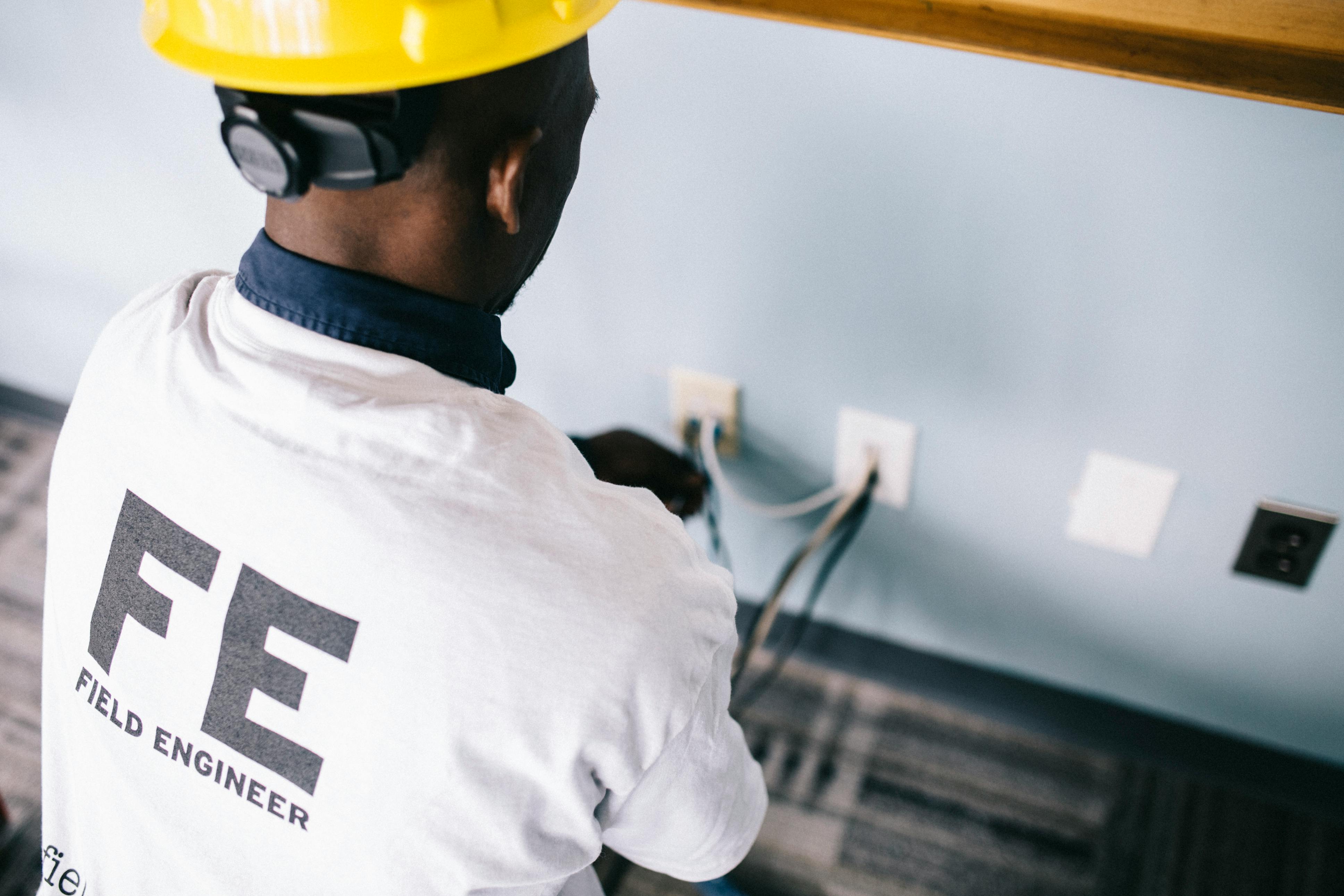After months of waiting for Verizon to launch the Samsung Galaxy Nexus, it finally landed last week (after some delays). The internet hype for the Galaxy Nexus had basically made this device the unicorn of Android, it would do and be everything everyone could have wanted in a phone. Then when it launched, Verizon had staff that weren’t prepared, didn’t have enough inventory, and some service hiccups made things more difficult. But even with all the challenges, the device has found its way into the hands of enthusiastic buyers, and the bloggers and reviews are starting to pour in and everyone has their say. Some of those reviews are based on what buyers expected the device to be, others are based on what buyers wanted the device to be. After two weeks with the Galaxy Nexus as our daily driver, we felt it was finally time to jump in and tell you definitively what our impression of the pure Google Galaxy Nexus phone is.
Unpacking:
The Verizon Galaxy Nexus comes in a plain white (even vanilla) box. Inside the box itself is a simple red lining and, of course, the device itself. Accompanying the device is an 1850 battery, a standard micro-usb charger, headphones, and of course, an instruction manual.
Initial impressions:
When you open the box, you see what you’ve been waiting for all these months. Verizon’s version of the Samsung Galaxy Nexus. Just looking at the device your initial impression is WOW, that screen is HUGE. You take it out of the box and feel it in your hands and can’t wait to see what’s hiding beneath its curved exterior.
After you power on the device, it receives a new boot script, which removes some of the Honeycomb boot script queues. The boot sequence itself shows off the capabilities of the Super Amoled display. Blacks are black, colors are bright and vibrant. Once the boot is complete, try Ice Cream Sandwich for the first time and how the Android operating system will handle your experience from now on.
Hardware:
After getting past the screen size and colors, the first thing you notice is how light the Galaxy Nexus is in your hands. It’s not light in a cheap way, but I can’t believe how light this is in my hands. The phone also fits in the hand better than you might expect, knowing that it has a 4.65″ screen, I expected it to feel big and awkward but, without having to make room for the hard keys, the phone is no bigger. of what it needs to be, and the curved design makes it feel perfect in the hand.
The screen and the weight of the phone are just two aspects of the phone that make up a device that feels as if the designers at Samsung went to great lengths to deliver a hardware experience that has never been seen or felt before.
The frame:
There are two simple hard buttons on the sides of the device, on the left side the standard volume rocker, and the right has the power/standby button. The bottom of the device has the Micro-USB port and the headphone jack, apart from that the device has clean lines around the casing of the device.
The back:
The rear panel is something of a bit of a debate right now. It’s not a traditional hard plastic (or Kevlar) protective piece, it’s a flexible snap-on piece that feels almost flimsy outside of the device. Once the SIM card and battery are in place and you snap the back into place, it feels more solid than you might imagine on its own. Also, the back has little diamond ridges that keep it from feeling slippery or brittle. Against the palm of your hand you know it’s there, and in your fingers you know it’s not going to slip or slide like some of the “soft” backs of phones like the Thunderbolt or the original Droid.
It also has the 5MP rear camera with LED flash, we’ll do a full camera write-up separately, but suffice to say, coming from the 8MP shooter on the HTC Thunderbolt, I was initially concerned about how my shots would look, after a week with my phone, I no longer have a reason to carry a point-and-shoot camera.
The front:
The front of the Galaxy Nexus is dominated by its 4.65″ curved glass display. At the top of the device is the call speaker (which is the only interruption in the smooth surface), the proximity sensor (under the glass) and the front camera.At the bottom of the face, hidden under the glass, is a notification LED, which takes a bit of getting used to as it’s a departure from the standard top-right notification indicator.At the moment, it glows white when it receives any notification (email, text, missed call, etc.), but I can see developers binding their notifications to the LED and hopefully changing the color or blink rate.
Overall, the front looks sleek and stylish, and just showing it to people makes them stop and pay attention.
The guts:
The Galaxy Nexus is powered by a 1.2GHz dual-core processor, with 1GB of RAM and 32GB of onboard storage. It doesn’t feature an SD or Micro-SD card slot, so there’s no option for expandable memory. Google is betting that users will use cloud storage for many of their needs, and since the Galaxy Nexus syncs very well with Google Music, Google Docs, and Picasa, most of your high-volume needs are covered.
The processor is nimble and performs tasks with seemingly little effort, switching between apps, screens, multitasking, all features without hiccups. Even running games like the recently released Modern Combat 3 does not affect the performance of the devices.
One hardware feature on the device that has received a lot of attention is the NFC chip. This is only the second phone in the US to have a built-in NFC chip (the Sprint Galaxy S being the first). Unfortunately, Google Wallet is not enabled on the device, and apart from Google Beam, there is nothing available to take advantage of this new addition. It will be some time before developers start creating apps that use NFC due to the lack of compatible devices at the moment, but the possibilities are endless.
Software:
This is where the real beauty of the device begins to shine, with the first test of Android 4.0 Ice Cream Sandwich (ICS). It all seems that this is what Google intended when it initially released Android. Gone are the greens that have accompanied Android since its launch and now comes the new softer blue that makes it feel more attractive. The software’s responsiveness is incredible, thanks in part to the 1.2GHz dual-core processor and 1GB of RAM, but the software itself feels more solid and more elaborate than previous versions of Android, even Honeycomb.
ICS has made Android more intuitive and cleaner to feel and use, without taking away any of the skills or “power” users have had from the beginning. Switching between screens and apps is done by swiping. Moving and uninstalling apps works the same as on other versions of Android, but now you can group apps into folders by simply placing them on top of each other. Inside the folders, you can rearrange the apps however you like and interact with the apps, but the folder floats above the home screen, you still know where you are, and you don’t feel like you’re diving too deep to get to anything.
Individual apps open quickly and you can manage the apps you have running at any time by clicking the menu button. This opens a sidebar showing all your recent and running apps similar to the experience in Honeycomb. From this sidebar you can easily switch between apps or close them by simply swiping. The ability to close apps from this sidebar is a very welcome new addition to ICS, I can’t tell you how many times in Honeycomb I saw an app and just wanted to close it but couldn’t.
Also, knowing that your device will receive updates from Google, so you’ll have the latest and greatest builds for at least 12 months, makes it that much more enjoyable.
Use in the real world:
What most people want to know is “should I buy the Verizon Galaxy Nexus?” and one of the main questions they have is “what about battery life?” Well, I’ve been using the device as my daily driver for a week now and I felt I could comfortably answer these questions. First of all, if you’re looking for a new phone or an eligible upgrade, I recommend you buy the Galaxy Nexus without even hesitation. This device is everything I expected and more, it has made me stop worrying if I was going to run out of battery, or if I needed to uninstall apps or root my device to make it work better and faster.
Day 1:
Day 1 usage was pretty standard for any new device, initial setup, downloading of most used apps (Facebook, Social Scope, Reader, etc.), sync setup, and normal scheduled events. Like all new devices, the battery came with about a 40% charge to start with, and you can see how that worked out in the screenshots below.
Day 2:
Day 2 usage got a little more intense, a lot more app usage, web browsing, basically putting the device through its paces to see what it could do. Battery usage was better than day 1, but still not phenomenal.
Day 3:
Day 3 was more of standard usage, calls, emails, browsing, app usage, app download, and more tweaking to settings. Battery usage with the device automatically switching between 3G/4G and using WiFi when needed was pretty impressive, especially considering the display and processor.
Day 4:
Day 4 continued with standard usage and no real changes to settings. Again, use the standard 3G/4G settings with the device automatically detecting the strongest signal and using WiFi when necessary.
Day 5:
On day 5 we had a bit of a hiccup with Google Currents, it was running constantly and constantly trying to sync and stay active, using a lot of battery and draining the device a lot. Once Currents was uninstalled, everything was back to normal and we were comfortable with our battery life. We’re looking at 14 hours of battery life on a regular basis with standard usage.
General impressions:
My overall impression of the Samsung Galaxy Nexus is that this is everything Google intended Android to be. The hardware is excellent, light and responsive. The operating system, Ice Cream Sandwich, is fluid and smooth, is intuitive and easy to use, more consumer-oriented than any Android version to date, and definitely takes the fight to Apple in terms of simplicity and “just works.”
There are a few bugs to fix and we’ll address some of them in other posts, but this device is a definite buy if you’re in the market for a new smartphone. Even if you weren’t on Android before, this is a device you should seriously consider switching to. In addition to the bells and whistles of being a pure Google experience device, you get the benefit of Verizons 4G network (where available), which is faster than anything else on the market and makes mobile life a reality. real.



